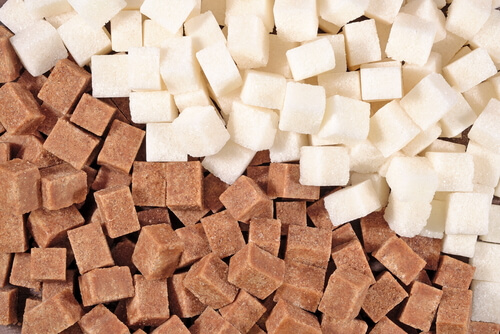Discover the Uses and Advantages of Beet Sugar Vs Cane Sugar in Your Daily Diet Plan
Discovering the distinctive qualities of beet and cane sugar exposes even more than simply their sweetening capabilities; it highlights their special influence on health and culinary arts. Beet sugar, understood for its refined taste, is commonly preferred in fragile treats, whereas cane sugar, with its tip of molasses, adds richness to robust recipes. Each kind holds its very own dietary account and glycemic effects, welcoming a much deeper understanding of their duties in a balanced diet and sustainable usage methods.
Origin and Production Processes of Beet and Cane Sugar

The unique environments and dirt types required for expanding sugar beetroots and sugarcane contribute to distinctions in their farming methods and geographical circulation, affecting the economics and sustainability of their manufacturing. beet sugar vs cane sugar.
Nutritional Contrast Between Beet Sugar and Cane Sugar
Despite originating from different plants, beet sugar and cane sugar are nutritionally very similar, both largely containing sucrose. Each offers about 4 calories per gram, equating to roughly 16 calories per teaspoon. Structurally, both sugars are composed of around 99.95% sucrose, with minimal quantities of other materials like moisture and trace minerals, which do not considerably modify their nutritional accounts.

Inevitably, when choosing in between beet sugar and look these up cane sugar based upon nutritional material alone, both deal similar advantages and drawbacks as they are essentially types of the same molecule-- sucrose, supplying fast energy without various other nutrients.
Effect on Health And Wellness: Glycemic Index and Caloric Material
Discovering further into the effects of beet sugar and cane sugar on wellness, it is very important to consider their glycemic index and caloric content. Both sugars are classified as sucrose, which includes glucose and fructose. This composition leads them to have a similar influence on blood glucose levels. The glycemic index (GI) of both beet and cane sugar is around 65, categorizing them as high-GI foods, which can cause quick spikes in blood glucose degrees. This is a crucial aspect for individuals managing diabetic issues or those trying to stabilize their power degrees throughout the day.
Each sort of sugar consists of about 4 calories per gram, making their caloric web content matching. For those keeping an eye on caloric consumption, particularly when managing weight or metabolic health problems, comprehending this equivalence is vital (beet sugar vs cane sugar). Excessive usage of any high-calorie, high-GI food can add to health concerns such as weight problems, heart disease, and insulin resistance.
Environmental and Economic Factors To Consider of Sugar Production
Beyond wellness influences, the manufacturing of beet and cane sugar also increases considerable ecological and financial worries. Sugar beet cultivation has a tendency to call for cooler environments and has a lower geographical footprint contrasted to sugar cane, which thrives in tropical regions.
Furthermore, the usage of pesticides and plant foods in both beet and cane sugar farming can bring about soil degradation and air pollution, see further impacting biodiversity and local water bodies (beet sugar vs cane sugar). The selection between cultivating sugar beet or cane frequently depends upon regional ecological conditions and financial factors, making the sustainability of sugar production a complicated problem
Culinary Applications and Flavor Distinctions
While the environmental and financial aspects you could check here of sugar production are undoubtedly substantial, the option between beet and cane sugar also affects culinary applications and taste accounts. Beet sugar, acquired from the sugar beet plant, is recognized for its incredibly neutral taste. This makes it a flexible component in baking, where it does not alter the flavor of other components. It dissolves rapidly and is ideal for usage in cakes, cookies, and pastries.
Walking stick sugar, extracted from sugarcane, usually preserves molasses traces, which give an unique splendor and deepness. The small variant in dampness web content between beet and cane sugar can affect the texture and uniformity of meals, making cane sugar a recommended selection for particular recipes that benefit from its special homes.

Final Thought
To conclude, both beet and cane sugar have distinctive origins and manufacturing procedures, providing comparable nutritional profiles with minor distinctions in salt content and flavor. While their influence on health and wellness, especially pertaining to glycemic index and calories, is equivalent, the choice between them frequently comes down to environmental, financial variables, and particular culinary demands. Understanding these aspects can direct customers in making informed decisions that line up with their health and wellness objectives and taste choices.